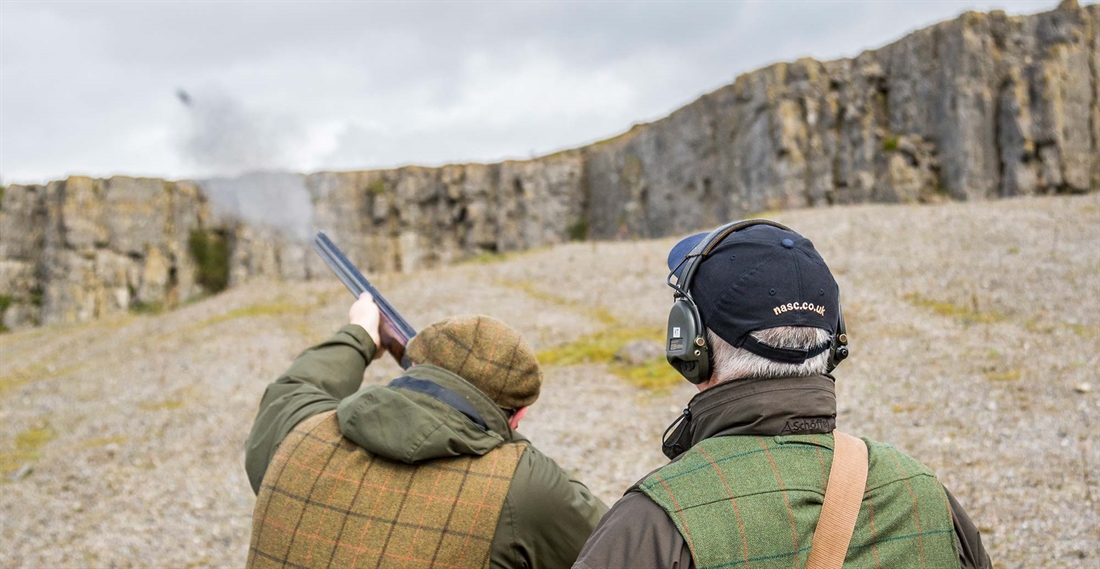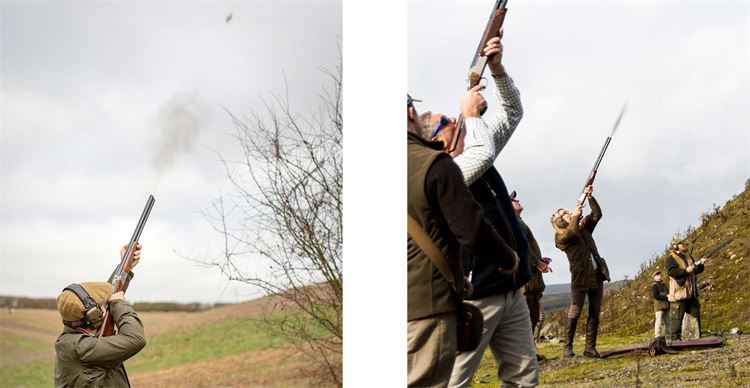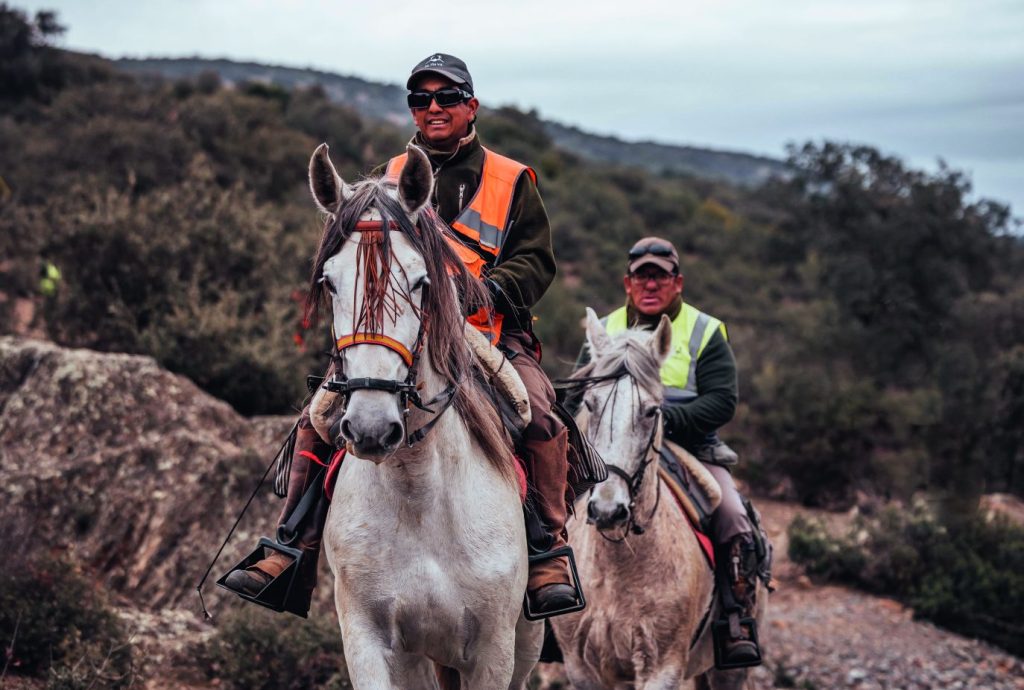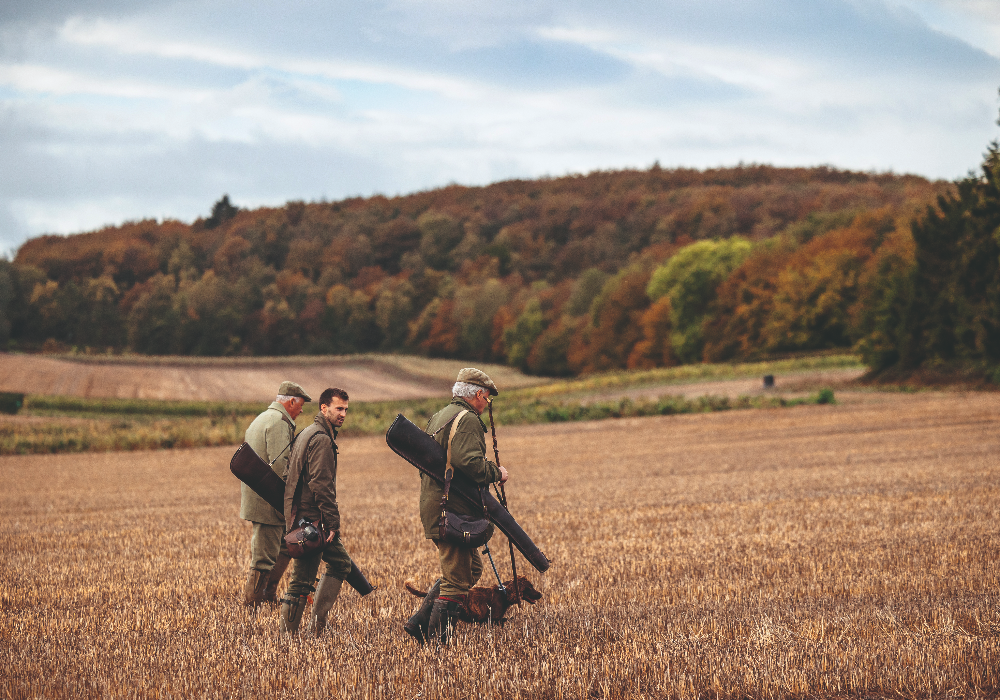Shot strings explained
There's more to a pattern of shotgun pellets than you might think.

It is a fair assumption that most people who shoot rarely consider shot string. Yes, they may think of the pattern and the speed at which it travels. But the pattern to most mind’s eyes is a plate-shaped circle, with hopefully not too many holes in it.
This is precisely what you see when you test a gun on a pattern plate. You get a pretty good idea of how your gun and cartridge combination are performing. But not entirely. For as the pellets fly through the air, they not only do so in the shape of an ever-widening plate but in a long string which extends in flight. In approximate terms it can be around 5 feet in length at 20 yards extending to 8 feet at 30 yards.
The variation is as a result of deformation of pellets as they pass along the barrel. Those at the bottom of the load in the cartridge will suffer most, as a consequence of which their flight will not be true, nor will they travel at quite the same speed as the front end of the load which will consist of still fairly perfectly spherical pellets.
In effect you are sending a column of pellets in front of the intended target. I’m not normally in favour of getting too bogged down in the technicalities of ballistics, I am more interested in getting the string to the right spot. But I do think that it is useful to understand the dynamics of shot string, as it can give you more confidence in placing your shot ahead of a crossing bird. Ideally you will connect with the centre of the string, where there will be a good concentration of pellets. But you can give a little more forward allowance than you might think is necessary, and the shot string will look after you. Not to mention a good spread of pellets across a 30” circle. Basically it’s a wonder we ever miss!
Of course we are talking about a shot charge travelling at 1100fps, so it’s not as simple as it sounds, but nevertheless an understanding of the dynamics of the content of your cartridge can only help.
The quality of the cartridge can also make a difference. It is worth trying a few different makes to find which one is the most compatible with your gun. Performance can vary. Generally, as with most things in life, the more expensive cartridges are better, but it may well be that the ‘own brand’ cheapies from your local farm shop will do the trick. Once you have found what suits you then stick with it.
Then provided your gun fits you properly, your confidence with your chosen cartridge will blossom. You will not be filled with doubt about your combination – you can just get on with your shooting. The odd misses will be inevitable – forget them. It’s the next shot that counts. Have confidence.
It’s behind you!
Many of you will enjoy some partridge shooting in the coming weeks. Footwork is crucial for all shooting, but for low ground partridge never more so.
We all know the shot. The guns are lined out about 30-40 yards back from a tall hedgerow. The birds appear as if from nowhere. Ideally you take your shot in front, but miss with your first barrel, then attempt to take a bird as it retreats into the distance behind you. Miss! And you end up practically tied up in knots.
Just why are those birds behind you so difficult? I am often asked this question and the answer is quite simple. Footwork.
The speed at which the birds approach induces a degree of panic, but in reality there is a lot more time than you think. We all know that when you shoot a bird in front, for a right hander your left leading foot will be pointing in the direction of where you intend to take the shot. The same applies to any shot. So you have to move your body to get into position. You simply need to be alert to what is happening.
Let’s go back to the beginning. You arrive at your peg for the drive. From this moment you need to be focused. Forget about chatting to the guy at the next peg, or fiddling with your gunslip, sorting cartridges or talking to your dog. Get ready, look around you for any possible picker-ups or other hazards behind you. Get loaded and be fully tuned for what’s happening. Otherwise if an early covey bursts over the hedgerow, you may miss a chance of a good right & left, that might well be your only opportunity of the day. If you are chatting with your neighbouring Gun, this is also an insult to your host. So be ready.
Keep a sharp lookout from where you expect the first birds to appear. Your shot in front will be practically, move, mount shoot. There is no conscious effort to give lead. Your gun speed will do what’s needed providing you have the gun properly mounted and are looking at the bird’s beak.
But should you miss, don’t simply follow it. Turn, with your gun down but muzzles pointing safely upwards. Let your feet take the body round so that your leading leg is pointing towards the bird, your eyes fixed on it, then mount onto it and shoot.
If however there is gale blowing, and the bird is quartering between you and the next Gun, this really can be a tricky shot. It might well be 45 yards out before you are able to pull the trigger. On a grouse moor this can be exaggerated. I was out in a strong wind in September, and a quartering bird behind the line was at least 60 yards distant by the time you could safely pick it up. It was therefore paramount to shoot in front.
For most of these shots your body and feet need to be turned, so that you can pick up the bird with your gun muzzle at least 30 degrees past the line of the Guns.
If you are still standing with your body facing frontwards, and then turn and twist without moving your feet then you will be lucky indeed to connect with anything.
An easy analogy can be made with cricketers and tennis players. In order to make a good shot they get their feet and body into position before striking the ball. The really good players seem to have so much more time.
The same applies to shooting. Keep your cool and give yourself time. If you feel the shot must be taken behind, adjust your feet and turn round on your peg so that the point of taking the shot the body is completely comfortable.
Of course the same applies to high crossing pheasants, but the whole procedure is exaggerated with hedgerow partridges.
Related Articles
Get the latest news delivered direct to your door
Subscribe to Fieldsports Journal
Elevate your experience in the field with a subscription to Fieldsports Journal, the premium publication for passionate country sports enthusiasts. This bi-monthly journal delivers unparalleled coverage of game shooting, fishing and big game across the UK and beyond.
Each issue offers a stunning collection of in-depth features, expert opinions and world-class photography, all presented in a timeless yet contemporary design.
Save 10% on shop price when you subscribe, with a choice of packages that work for you. Choose from Print & Digital or Digital only with each journal delivered directly to your door or via the app every other month, plus access to past issues with the digital back issue library.








